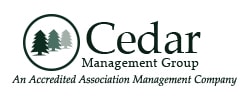People who run an organization would benefit from understanding Robert’s Rules of Order for meetings. These rules help maintain structure when conducting meetings, ensuring a productive and efficient experience for everyone. It eliminates unnecessary tangents and keeps everything on track. Unfortunately, some leaders don’t know the first thing about what the rules entail.
What Is Robert’s Rules of Order for Meetings?
Robert’s Rules of Order is a widely used guide for conducting effective and orderly meetings. The primary purpose of Robert’s Rules for Order is to provide a set of rules and procedures that organizations can follow to conduct meetings in a fair and efficient manner.
The Requirements for Robert’s Rules of Order for a Business Meeting
Nationwide, organizations adopt Robert’s Rules of Order for meetings, and HOAs are no different. Regardless of the nature of the meeting, certain common elements must be present.
Robert’s Rules standard rule of order should include the following:
- A quorum that ensures a sufficient number of participants
- Designation of a minute-taker for record-keeping
- Appointment of a meeting chair or leader
- Clearly defined rules specifying attendees, participants, and voting criteria
- Advance notice, including the meeting’s date, time, and purpose (referred to as the call to the meeting), sent to members
What Are Robert’s Rules of Order Agendas for Meetings?
Essentially, the agenda is a comprehensive list of tasks to be addressed during the meeting. Preparing an agenda organizes how the HOA will handle each business item. Typically, items are arranged in order of importance.
Following Roberts Rules for meetings, homeowners associations are advised to address one agenda item at a time. This practice ensures focus, prevents deviation from topics, and optimizes time for members to concentrate on specific thoughts and ideas. Creating an agenda plays a crucial role in adhering to Robert’s Rules of Order meeting structure.
How to Prepare Robert’s Rules of Order Meeting Agenda
For those unfamiliar with HOA meetings, establishing an agenda may seem challenging. Fortunately, the meeting rules of order offer a basic outline for organizations. Here’s a guide on how to craft an agenda following Robert’s Rules of Order for meetings:
- Call to Order: The president initiates the meeting through a roll call to establish a quorum. Following this, they officially call the meeting to order, adhering to the established order of business.
- Reading and Approval of Minutes: The community collectively reads aloud the minutes from the previous meeting. Subsequently, members approve the minutes, acknowledging their accuracy.
- Reports from Standing Committees and Officers: Officers and standing committees present relevant reports to the membership. Any special committees may follow with their reports if applicable.
- Presenting Special Orders: Matters designated as special orders in the previous meeting are addressed before Unfinished Business. This category may encompass annually recurring items like nominations and board elections.
- Unfinished Business: Any motions still under discussion from the previous meeting are deliberated under Unfinished Business.
- New Business: Members introduce fresh issues and motions specific to the current meeting.
- Adjournment: The HOA adjourns the meeting once all agenda items are addressed.
Implementing Robert’s Rules of Order for Meetings
When conducting meetings, it is essential to apply the following procedures.
1. Establishing a Quorum
Before venturing into official business, the essential first step is establishing a quorum. In smaller associations, the president may opt for a simple roll call, while larger gatherings might designate an officer or member to manage attendee sign-ins. The resulting sign-in sheet, neatly appended to the meeting minutes, serves as tangible evidence of the meeting’s legitimacy with a quorum.
2. Opening the Meeting
Robert’s Rules of Order mandates a formal call to order to inaugurate meetings officially. The president stands before the assembly, declaring, “The meeting will come to order.” Subsequently, the initial order of business involves reading the minutes from the preceding meeting, typically delegated to the secretary. Corrections and amendments are invited from the membership before steering into the heart of the meeting.
3. Motions and Approvals
Members actively propose motions encompassing discussions, actions, or decisions during the meeting. For a motion to progress, it necessitates a second from another member. The presiding officer then articulates the motion to all members, providing the platform for ensuing discussions.
Stringent rules are in place to ensure a fair and organized dialogue. The presiding officer must give preference to the following:
- The person who proposed the motion
- A member who hasn’t spoken to the motion
- Members who don’t often talk or address the assembly
A vote is conducted after deliberation, and the results are promptly disclosed. This formally closes the current motion and paves the way for new ones.
4. Postpone, Amend, Commit, Question, and Table
The community holds the freedom to engage in thorough debates on motions. However, active discourse is not the sole avenue for participation. Members also have the authority to bring discussions to a close using two distinct methods: moving to postpone the matter indefinitely or questioning the motion.
When a member moves to postpone the motion indefinitely, they intend to terminate the discussion. Upon approval of this motion, a member may not reintroduce it during the meeting. Nevertheless, the community retains the option to revisit the motion in a subsequent gathering. On the other hand, if a member moves to question the motion, they aim to conclude the debate swiftly. Upon approval, the president promptly conducts a vote on the motion, prohibiting any further discussion.
In addition to these options, members possess the ability to amend motions. The purpose of an amendment is to modify or refine the motion under consideration. Alternatively, members can commit the motion to a committee. This mandates that the assigned committee furnish a comprehensive motion report during the next meeting.
Finally, members may propose to table the motion. This action temporarily sets aside the matter for discussion later in the meeting or in subsequent sessions.
All of these motions require a second motion for consideration. Furthermore, the community must formally vote for these motions to push through.
5. Closing Meetings
If the meeting has a designated end time, it will continue until that predetermined time elapses. Conversely, any member may propose a motion to adjourn the meeting without a predetermined conclusion. The presiding officer must acknowledge the member making the motion, and another member must second it. Once a second motion arises, the president initiates a vote among the members to adjourn the meeting officially.
The Final Word
Following Robert’s Rules of Order for meetings isn’t always easy, especially for an inexperienced HOA board. Fortunately, learning the ropes is entirely plausible. Plus, board members can always seek help from an HOA management company.






